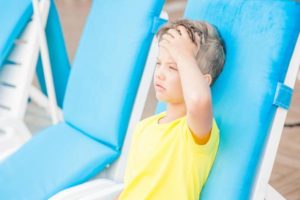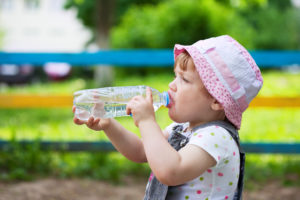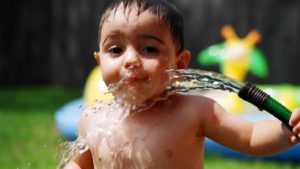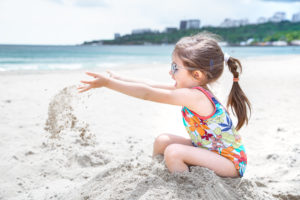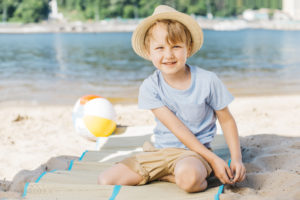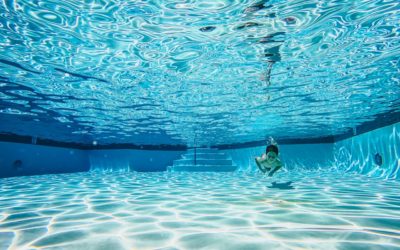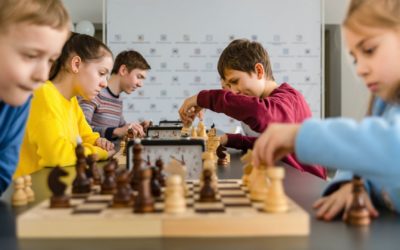Throughout the summer, the sun is there to say hello. Even if we like him, let's admit it, he often acts up and gives us temperatures that are a little too high during the day. Surprises" can happen, and not all of them are good... Especially for the youngest ones who are not yet aware of the harmful impact that the sun can have on their little bodies. That's why Kidlee has prepared an article for you so that you don't panic if your child gets a heat stroke or sunstroke.
Dehydration in children
A dehydrated child is a child whose water loss is greater than his or her intake. This can happen in summer and even in winter! If a child does not drink enough water, vomits or has diarrhea, the danger is present. At the same time, water represents 60 % of an individual's weight, so water is really life.
Symptoms
- An intense thirst
- Dryness of the mucous membranes
- A decrease in urination
- Asthenia
In case of doubt or if you are not alert, you should call emergency services at 15 or 112.
What to do?
For prevention, make sure the child drinks enough water. Offer water several times a day or leave a water bottle available. According to the MSD Regardless of the child's age, the most effective treatment for dehydration is frequent sips, taken about every 10 minutes.
The heat stroke aka heat stroke
In short, it's like your internal thermostat giving up the game because it's too hot. It is important to know that the body temperature must be maintained at 37 degrees by the thermoregulation mechanism. So, if the child is exposed to high heat for too long it will cause hyperthermia. This can happen in different situations, for example a car left in the sun or during intense physical activity.
Symptoms
- A fever
- A burning and dry skin
- Nausea, vomiting and diarrhea
- Headaches
Heat stroke is not serious in 3 out of 4 cases. However, it is necessary to remain vigilant because beyond 40,5°, the risk is mortal.
What to do?
First, let's start with preventive measures: when it's too hot, don't go out. For outdoor trips, it's better to go out after 4pm than at noon. Also, since it's summer, don't forget to put on sunscreen. As soon as you feel the heat, wet your head and neck and wear a hat or cap and light clothing for optimal protection. Finally, do not hesitate to drink water regularly because water is life.
Second, let's move on to treatment. The first thing to do is to spray the victim with cool water, not too cold water, as this may cause thermal shock. If the child loses consciousness, you should call the ambulance immediately.
Sunstroke in children
In this case, Mr. Sun is primarily responsible. Indeed, sunstroke is a heat stroke that results from too much exposure to the sun. In this case, the sun hits the head and neck, which is why children are the most affected. It is important to know that in children, the bones of the skull are thinner and their hair is less thick than in adults. Moreover, sunstroke can occur even if it is not super hot outside because it is only the sun that is responsible.
Symptoms of sunstroke in children
- The face all red with an impression of heat
- Headaches
- A slight rise in temperature without exceeding 38.5°.
What to do in case of sunstroke in children?
Now that we know who is really responsible for the sunstroke, we can easily deduce what to wear and what not to wear. For example, since it is the head that is affected, we take a hat with a wide brim. Hey, don't forget to protect the back of your neck too! If an outing is planned and Mister Sun is still there, don't hesitate to wet your neck and forehead from time to time. And if a picnic is planned, we try to find a place under the shade for the good of the children.
In case of sunstroke, it is always a good idea to go for a medical consultation. In the meantime, there are some simple things you can do, such as laying the child in the shade in a cool place, creating a draft with a leaf or fan, trying to get the child to drink cool water and wetting the head and limbs.
